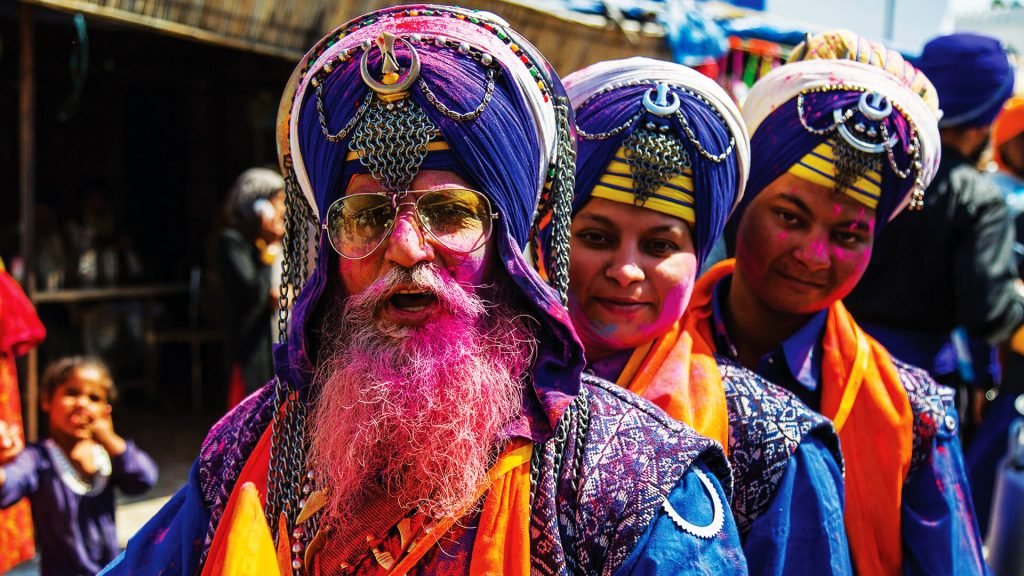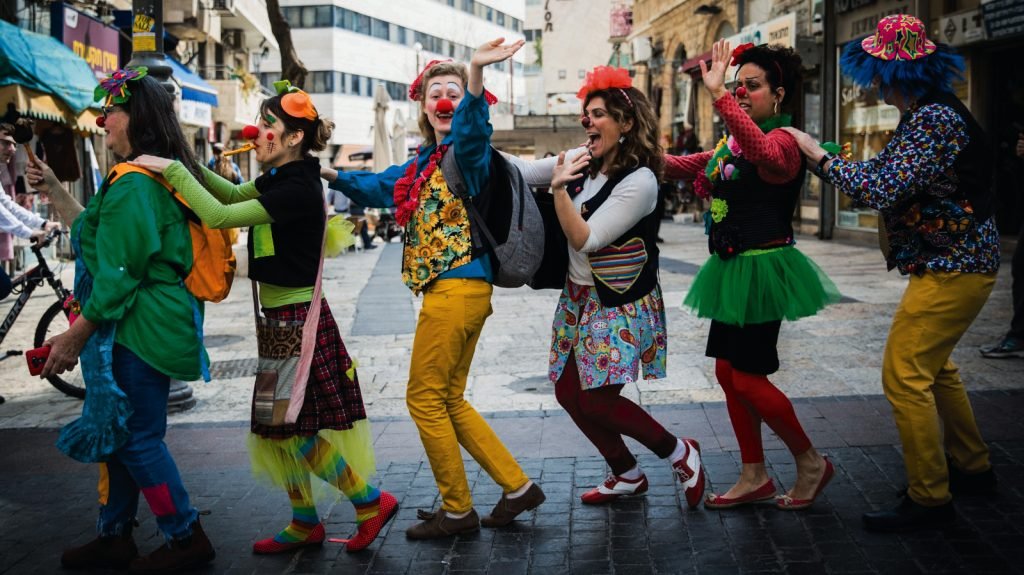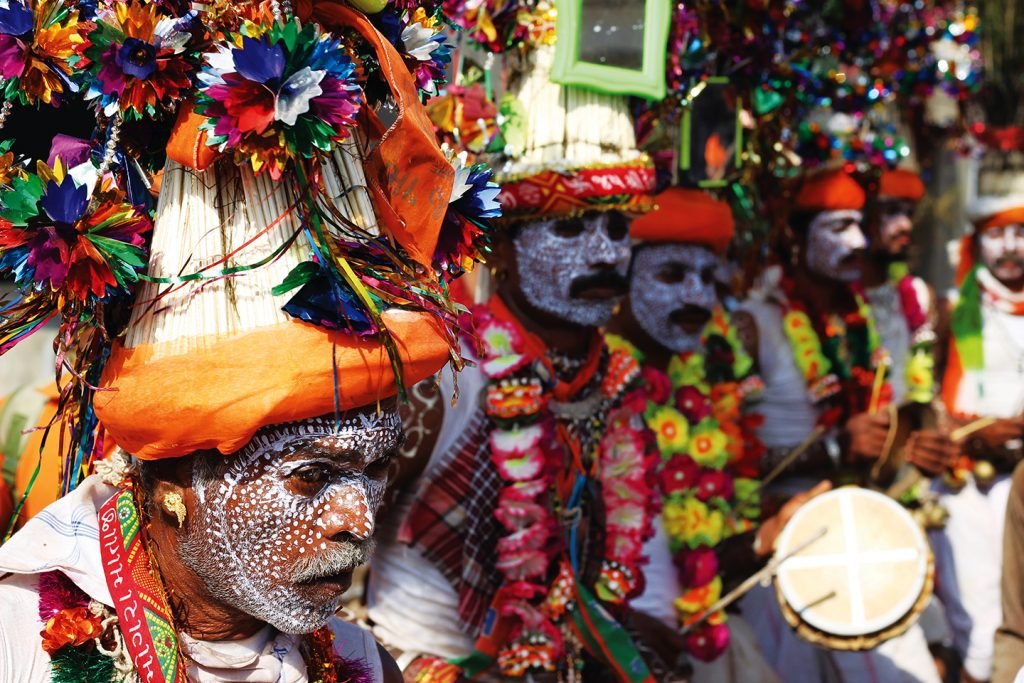India’s MARCH 2020 Festivities

Festivals mark the spirit of joy and celebration. They demonstrate the rich cultural heritage of the people and country. They help in bringing happiness and strength to the lives of people by spreading the message of universal brotherhood. Thus, by celebrating, they help facilitate this knowledge and tradition to be passed on to the next generation.
Holi
The Holi festival, also marked as an opening festival in the Hindu calendar, falls on the full moon day in the month of Phalgun (March 10th this year). It commemorates the victory of good over evil. Days before the festival, people start gathering wood and combustible materials for the bonfire in parks, community centres and other open spaces. Inside homes, people stock up on color pigments, food, party drinks and festive seasonal foods such as gujiya, mathri, malpuas and other regional delicacies. On the eve of Holi, typically at or after sunset, the heap of wood is lit, signifying Holika Dahan. The ritual symbolizes the victory of good over evil. People gather around the fire, sing and dance. You’ll find Holi festivities taking placein most areas of India. Celebration of Holi festival is characterized by performing Holi puja as per Hindu tradition. After Holi puja, the next day is celebrated as Duhleti, which is considered to be the actual festival of colors. During this festival people clean up their houses by burning up waste articles of house and around the house in a significance of destroying disease breeding bacteria and the sanitary condition of the locality is also improved. On this day people put colors on their friends, relatives, even on strangers no matter what the social status is, which make this festival, festival of love too as it rubs off all the social, caste, color discrimination among people and unites with them with the power of color.
Holla Mohalla

Hola Mohalla, also known as Hola, is the annual festival of Sikhs which begins on the first day of the lunar month which often falls in March and celebrated extensively over three days mainly at the Anandpur Sahib Gurudwara because this custom originated in the time of and by Guru Gobind Singh (1666 – 1708) who held the first march at Anandpur on 22 February 1701. When people play Holi by spraying colors on each other the Guru made Holla Mohalla an occasion for the Sikhs to showcase their martial skills in simulated battles. The event consists of camping out and enjoying various displays of martial arts fighting accomplishment, excellence and bravery by the Nihang’s. Apart from showcasing martial skills Hola followed by the various programmes like kirtan, music and poetry. For meals, which is an elemental part of the Gurudwara, visitors sit together in pangats (queues) and eat vegetarian food of the langars.
Elephant Festival

Elephants are regarded as precious and majestic since puranic era. The supremacy of elephant is also well illustrated in the Hindu mythology. According to legends, at the time of ‘Samundra Manthan’ when demon and gods were busy in churning the ocean, gods were fortunate to receive an elephant called ‘Airavata’ which later became the divine Vahana (vehicle) of Indra. Since then, elephant has become a symbol of royalty in Indian culture and many festivals are also associated with it. Elephant Festival is celebrated in Jaipur on the day of Holi in Phalgun. This is an annual event held at Jaipur Chagan Stadium where people gather in large crowds to celebrate the occasion with much pomp and gaiety. Jaipur Elephant festival is perhaps the only festival where elephants are given importance. Here, as you would expect from the name of the festival elephants are the centre of attraction. During the festival, Jaipur comes alive with elephants, dancers and musicians which draw visitors from all over the world. The elephants stride majestic experience for everybody by parading their decorated trunks and tusks. The most noticeable feature of this festival is that all the elephants which take part in this festival are female elephants.
Purim

Purim is a Jewish holiday that commemorates the deliverance of the Jewish people in the ancient Persian Empire where a plot had been formed to destroy them. The story is recorded in the Biblical Book of Esther. According to the book of Esther, Haman, royal vizier to king Ahasuerus (Xerxes I of Persia), planned to kill all the Jews in the empire, but his plans were foiled by Mordecal and his cousin and adopted daughter Esther, who had risen to become Queen of Persia. The salvation day became a day of feasting and enjoyment. On the night of Purim they read the book of Esther in the synagogue (worship place of Jews). Each time the name of Haman (the bad guy) is mentioned, all Jews make noises, stomp, yell that sort of thing. They call this, as a practice Klopping Haman – “Hitting Haman”. Afterwards, they go home and eat a festive meal. The custom today is to visit one’s Rabbis (Jewish Scholar). In many places people put on plays, usually funny plays followed by dance and singing. In general, the theme is fun. The next morning, after the morning prayers, they read the book of Esther again doing the same thing at evil Haman’s name. Afterwards, they eat a festive breakfast meal and then give charity to at least two poor people. Giving charity is known as Matanos lo’evyonim and one of the commandments they are required to fulfill on the day of Purim. The primary Festive Purim Meal is eaten in the late afternoon on Purim, after Minchah (the afternoon prayer). One must eat bread, at least one cooked food and drink at least one cup of wine. They call it ‘Purim Seudah’.
International Yoga Week

Yoga is not entirely for our bodies, but Yoga is also for our minds, hearts and souls. Yoga is an ancient science which leads to health in the body, peace in the mind, joy in the heart and liberation of the soul. And for the same, the annual International Yoga Festival is organized by Parmarth Niketan Ashram in Rishikesh, India. Here they present a truly International Yoga where people practice and learn from masters of the Traditional Yoga Lineages from India, as well as masters of International well known yoga schools & styles. During this one week festival, one has the opportunity to participate in over 60 hours of Yoga classes from world-class Yoga teachers practicing multiple styles of yoga.
Kavant Fair

Kavant is an annual fair which take place after Holi on the third day and lasts for two days. Kavant fest is celebrated in Gujarat, mainly in the tribal region of chota Udaipur. It’s a symbolic festival for these people and tribal organize it with honor followed by dance and music. Kavant Fair is a harvesting fair, a blend of emotions, successful harvesting and family liasions. During the fair many artists, musician come from different part of India to showcase their talent. For celebrating this fair people of Kavant district gather up in this village five days prior to the fair and then drink for five days. Also you can find people dressed up in colourful clothes and in this attire of gods and demons of Hindu mythology.
Gangaur

Gangaur is an extremely important festival of Rajasthan. It commences on the day following Holi and continues for 18 days. The festival is celebrated by womenfolk with great enthusiasm and devotion for Gauri, the consort of Lord Shiva. While married women worship Gauri, the embodiment of perfection and conjugal love for the success of their married life, unmarried women worship the Goddess for being blessed with good husband. Gangaur festival also celebrates monsoon, harvest and marital fidelity. The first important ritual of the colourful festival of Gangaur is the collection of ashes from the Holi fire and burying of wheat and barley seeds in it. These seeds are religiously watered every day until the germination takes place. The ritual is performed with songs of Isar and Gauri (Shiva and Parvati) and the varying of pots of water on the head. A week after Holi, women make clay images of Gauri and Isar. The ritual is made colourful and joyous with the traditional folk songs sung in praise of Gauri. On the evening of the seventh day after Holi, unmarried girls take out a parade with ghudlia and singing songs related to it. Ghudlia is an earthen pot with holes around and a lamp inside. On their way, the girls are gifted small presents like sweets, jaggery, ghee, oil and a little cash. The ritual continues for ten days, upto the conclusion of the Gangaur Festival. On the last day girls break their pots and throw the remains into a well or a tank and enjoy a fest with their little collections. However, Gangaur Festival celebrations reaches its peak during the last three days of the festival. At this time women take special care to decorate themselves and also the clay images that they had prepared. At an auspicious hour in the afternoon, a procession is taken out to a garden, tank or a well with the images of Isar and Gauri, placed on the heads of married women. Gangaur aptly reflects the rich cultural heritage of Rajasthan and is celebrated with great pomp and show in Bikaner, Jodhpur, Marathwara and Jaisalmer. Gangaur Festival is also observed at some places in Gujarat.

